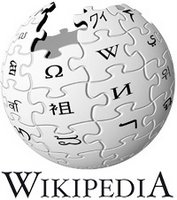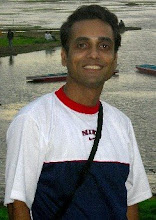On the way, I suggested that we should go to the Kappad beach. It had been a long time since I had gone to the beach. As always, Siam was reluctant to go but we convinced him. In the city, we had a very heavy lunch. The food was too good and I ate like a hungry pig. After the filling lunch, we reached Kappad by bus.
Kappad is around 16 kms from Calicut. For the people of Calicut (Kozhikode), this pleasant stretch of rock studded beach is Kappakkadavu. To the tourist it is one of the most charming of Kerala's beaches. Here, 501 years ago, 170 men led by the Portuguese navigator Vasco da Gama (1460-1524) sailed in and stepped into Kerala to create a new chapter in history.

Although, it is nothing compared to the beaches we have in Goa, it is perhaps the nearest place to go when you want to have a glimpse of the Arabian Sea while in Calicut. The Calicut beach for this matter is a dirty and smelly place.

Kappad is actually a village of fisherman, stretched along the coastline. During the high tide, the beach can be considered to be only 30 meters away from the sea –line while during the low tide, this increase to around 80 meters. The village stretches over a couple of kilometers. Along the coastline is an embankment of rocks. The houses are so close to the sea that one can even fish from the window if he has a long fishing rod :).
The whole afternoon, the three of us walked the stretch of san

dy beach (around 2.5 kms). When we arrived, it was high tide and we were lucky enough to see a lot of activities in the place. There were many fishing boats. A few fishermen were tryi

ng there luck from the beach itself. It was nice to see how you can fish during high-tide. What these people do is that they put into the water a long stretch of nylon net (width of about ½ meters) with weights along the borders. By using a empty black jar-can, they mark the point in the water where they have laid the net. Now the high-tide brings with it all types of fishes towards the beach (please see the pictures) and these get caught in the net. After say 1 hour or so, just before the tide begins to recede, they pull out the net.
Fishing is a big industry of coastal Kerala. We spoke to Ram Babu, a local fisherman who runs a contract of buying fish from local fisherman and processing fish before transporting

to Bombay for further processing before being exported. He says, everyone in this village is a fisherman. An individual earns between Rs.10 to Rs. 2000 a day from fishing. The government of Kerala has given some assistance to the local fisherman to improve the industry. They now can avail cheap loans from banks for mechanized boats.
Many of the fishing boats trawl around 100 kilometers into the ocean fishing for days together. It is

a very tough job, says Ram Babu and each catch is a priced treasure. We also saw a large number of women who were cutting and packing the catch deposited by the fisherman at Ram Babu’s shed. There were two trucks waiting to deposit ice for refrigeration. Thus fishing also provides employment to a large number of villagers in Kappad.
At Kappad, there is also a resort. While we were retu

rning from our adventure, we saw some foreigners who had come there for vacation. As the sun set, the sea became calm and the horizon became crimson. The scene was very beautiful and worth capturing. From the west, a cool evening mist was rising from the blue waters and engulfing the vast stretch of Kappad.
We were back to Calicut by 8:30 PM and so decide to have dinner at Mezbaan before going back to the campus.
For more kewl pictures from our Kappad trip, click
here

 http://news.nationalgeographic.com/....../index.html
http://news.nationalgeographic.com/....../index.html

 =online
=online  =offline
=offline
